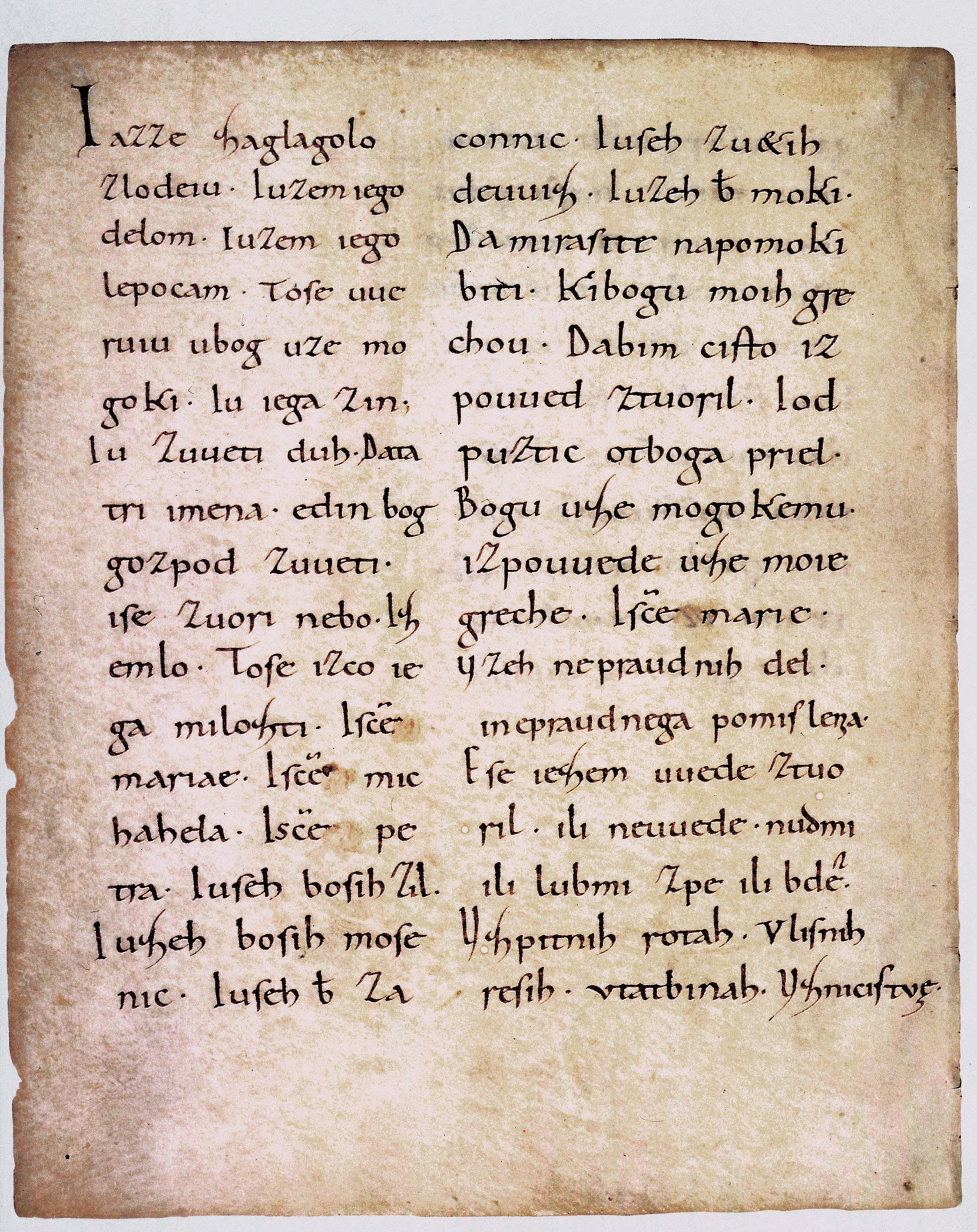Freising Manuscripts on:
[Wikipedia]
[Google]
[Amazon]
 The Freising manuscriptsAlso ''Freising folia'', ''Freising fragments'', or ''Freising monuments''; , , or are the first Latin-script continuous text in a
The Freising manuscriptsAlso ''Freising folia'', ''Freising fragments'', or ''Freising monuments''; , , or are the first Latin-script continuous text in a
Freising manuscripts (Brižinski spomeniki)
Scholarly Digital Editions of Slovenian Literature. Scientific Research Centre, Slovenian Academy of Sciences and Arts. Contains a historical overview of the manuscripts, a series of studies and commentaries, a glossary, transcriptions and translations.
Bavarian State Library. Presents the manuscripts and contains links to the digitised versions kept by the library. {{Authority control Earliest known manuscripts by language Slovenian literature Cultural history of Slovenia Christian manuscripts 10th-century manuscripts 11th-century manuscripts South Slavic manuscripts
 The Freising manuscriptsAlso ''Freising folia'', ''Freising fragments'', or ''Freising monuments''; , , or are the first Latin-script continuous text in a
The Freising manuscriptsAlso ''Freising folia'', ''Freising fragments'', or ''Freising monuments''; , , or are the first Latin-script continuous text in a Slavic language
The Slavic languages, also known as the Slavonic languages, are Indo-European languages spoken primarily by the Slavic peoples and their descendants. They are thought to descend from a proto-language called Proto-Slavic, spoken during the Ear ...
and the oldest document in Slovene.
Description and origin
The manuscripts were found bound into a Latincodex
The codex (: codices ) was the historical ancestor format of the modern book. Technically, the vast majority of modern books use the codex format of a stack of pages bound at one edge, along the side of the text. But the term ''codex'' is now r ...
(manuscript book). Four parchment
Parchment is a writing material made from specially prepared Tanning (leather), untanned skins of animals—primarily sheep, calves and goats. It has been used as a writing medium in West Asia and Europe for more than two millennia. By AD 400 ...
leaves and a further quarter of a page have been preserved (i.e., folia 78, 158, 159, 160, and 161, comprising nine pages altogether). They consist of three texts in the oldest Slovene dialect. Linguistic, stylistic and contextual analyses reveal that these are church texts of careful composition and literary form.
The precise date of the origin of the Freising manuscripts cannot be exactly determined; the original text was probably written in the 9th century. In this liturgic and homiletic manuscript, three Slovene records were found and this miscellany was probably an episcopal manual (pontificals). The Freising manuscripts in it were created between 972 and 1039, most likely before 1000. The main support for this dating is the writing, which was used in the centuries after Charlemagne
Charlemagne ( ; 2 April 748 – 28 January 814) was List of Frankish kings, King of the Franks from 768, List of kings of the Lombards, King of the Lombards from 774, and Holy Roman Emperor, Emperor of what is now known as the Carolingian ...
and is named Carolingian minuscule.
During the time of the writing of the two manuscripts (sermons on sin and repentance, a confessional form), Bishop Abraham was active (from 957 to 994) in Freising. It is believed that the manuscripts were written in the Möll Valley in Carinthia. For this reason some linguists (e.g. Jernej Kopitar and Rajko Nahtigal) linked Abraham closely to the origin of the Freising manuscripts and even attributed to him the authorship of one of the texts and suspected that he was of Slovene origin, although this was later disproven.
Modern history
The manuscripts were discovered in Freising,Bavaria
Bavaria, officially the Free State of Bavaria, is a States of Germany, state in the southeast of Germany. With an area of , it is the list of German states by area, largest German state by land area, comprising approximately 1/5 of the total l ...
. The Slovene name ''Brižinski spomeniki'' (literally 'Brižinj Monuments') was coined by the Carinthian Slovene philologist Anton Janežič, who Slovenized the German name Freising to ''Brižinj'' in 1854. In 1803, the manuscript came to the Bavarian State Library in Munich
Munich is the capital and most populous city of Bavaria, Germany. As of 30 November 2024, its population was 1,604,384, making it the third-largest city in Germany after Berlin and Hamburg. Munich is the largest city in Germany that is no ...
and the Freising manuscripts were discovered there in 1807. The texts were translated into modern Slovene in 1854 by Anton Janežič. Before World War II, a facsimile of the Freising manuscripts was published by at '' Akademska založba'' (Academic Publisher) in Ljubljana
{{Infobox settlement
, name = Ljubljana
, official_name =
, settlement_type = Capital city
, image_skyline = {{multiple image
, border = infobox
, perrow = 1/2/2/1
, total_widt ...
.
Exhibitions
The manuscripts are still kept at the Bavarian State Library in Munich and have left it only twice. In the 1970s, they were exhibited in the Vatican Museums. In May and June 2004, they were exhibited at the National and University Library inLjubljana
{{Infobox settlement
, name = Ljubljana
, official_name =
, settlement_type = Capital city
, image_skyline = {{multiple image
, border = infobox
, perrow = 1/2/2/1
, total_widt ...
.
See also
* Codex SuprasliensisNotes
References
Literature
* *External links
Freising manuscripts (Brižinski spomeniki)
Scholarly Digital Editions of Slovenian Literature. Scientific Research Centre, Slovenian Academy of Sciences and Arts. Contains a historical overview of the manuscripts, a series of studies and commentaries, a glossary, transcriptions and translations.
Bavarian State Library. Presents the manuscripts and contains links to the digitised versions kept by the library. {{Authority control Earliest known manuscripts by language Slovenian literature Cultural history of Slovenia Christian manuscripts 10th-century manuscripts 11th-century manuscripts South Slavic manuscripts